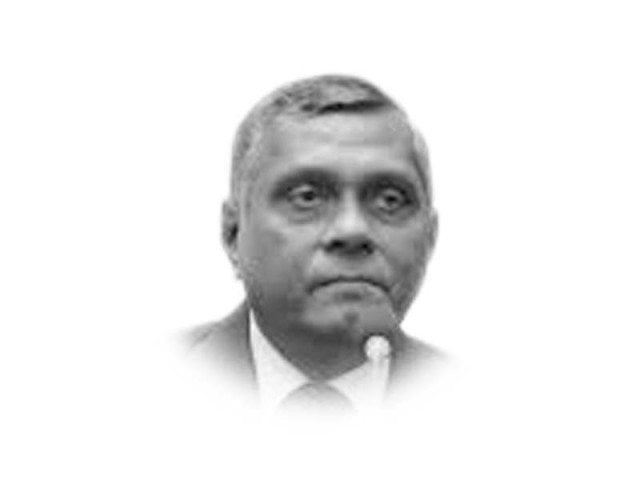
Afghanistan is again at the crossroads. Outgoing US President Donald Trump has directed withdrawal of the remaining forces from Afghanistan, while retaining 2,500, which according to critics is highly insufficient to meet the grave security challenges in the war-ravaged country. In the meantime, Prime Minister Imran Khan’s first-ever visit to Kabul on November 19, and his joint press conference with Afghan President Ashraf Ghani reflected consensus between the two countries to help establish peace in Afghanistan against all odds.
In 2020, two major developments which can help unleash the process of peace in beleaguered Afghanistan relate to the February Doha Agreement between the US and the Taliban for the former’s withdrawal of forces and the latter’s readiness to not resort to violence and attacks on American troops. Subsequently, the Doha talks also paved the way for the holding of intra-Afghan peace dialogue involving the Afghan government, the Taliban, civil society groups and other political figures of Afghanistan to agree on a mechanism for a lasting peace in the war-torn country.
One wonders if it is that easy to transform Afghanistan from a conflict and violent-ridden to a peaceful country. Who will be the beneficiary if peace is established in Afghanistan? Why do Afghans remain divided in order to put their own house in order? Since July 1973, when monarchy was abolished in Afghanistan and power was seized by Sardar Daud, the first cousin of emperor Zahir Shah, the country has been in turmoil which reached its peak in April 1978, when Daud was assassinated in a coup on April 27, 1978, which brought the pro-Soviet People’s Democratic Party of Afghanistan (PDPA) in power and culminated into the Soviet military intervention on December 27, 1979. The rest is history.
Around one million Afghans have been killed in foreign military interventions of Soviet Union (1979-89) and the US-led coalition forces from October 2001 till today. Millions of Afghans are rendered homeless and ended up as refugees in Pakistan, Iran and other countries. Three generations of Afghans have been destroyed in civil war and foreign intervention in their country and still there is no letup as far as violence and terrorism is concerned. What is the future of 40 million Afghans because unless the country is stable and peaceful it will continue to destabilise its neighbours particularly Pakistan.
Based on the ground realities, one can figure out three reasons to prove that peace will not return to Afghanistan so soon. First, the culture of Afghanistan militates against hope and efforts for peace in the turbulent country. Still categorised as tribal and ultra-conservative, with no hope of enlightenment, tolerance and harmony at the societal level, whether it is the Afghan government, the Taliban, warlords or political parties, there is marginal ownership among Afghans as far as the peace process, political pluralism and democracy is concerned. Periodic suicide and rocket attacks and numerous acts of violence claimed by Daesh, the Taliban and other militant groups is sufficient to prove how difficult it is to establish the rule of law. Absence of awareness for peace and security in their country is a major reason for violence and armed conflicts in Afghanistan.
When there is a meagre support and political will among local stakeholders for the people of Afghanistan to be a major beneficiary of peace, how can one expect a breakthrough as far as a meaningful agreement to end decades of armed conflict is concerned? For the elites of Afghanistan, who are the beneficiaries of this conflict, the ordeals and sufferings of the common people do not matter. Second, it is not only the people of Afghanistan who are to be the real beneficiary of longlasting peace in their war-torn country. There are to be other benefactors, including Pakistan, Iran and Afghanistan’s Central Asian neighbours. As rightly said by PM Imran Khan that after Afghans, Pakistanis would be the real beneficiaries of peace in Afghanistan. Yet, while Pakistan and other Afghan neighbours can benefit from peace, they can certainly not do much to stabilise things because of internal dynamics. Knowing that they will be the major beneficiary of peace, why have the Afghan people failed? Why have they transformed Afghanistan of 1973 which was stable and peaceful into a failed state? Blaming external powers and neighbours for playing havoc with Afghanistan will not help because at the end of the day only those who wield power are responsible for perpetual violence and bloodshed in the country.
Yet there are those who have enormously benefited from decades of wars and violence in Afghanistan. There are those who made a lot of money in the name of Afghan jihad and also those who earned millions of dollars after the dismantling of the Taliban regime and foreign intervention. During Musharraf’s regime hundreds of wanted Al Qaeda and Taliban members were handed over to the US after taking enormous amounts of money. The mafias in Pakistan and Afghanistan along with military contractors of the US are also the beneficiaries of wars in Afghanistan. Furthermore, a major beneficiary of killing fields in Afghanistan are the warlords who after the US-led military intervention and the overthrow of the Taliban regime emerged as real estate tycoons and investors. Nowhere are the Afghan people the beneficiaries as they are the ones who have suffered endlessly.
Third, political wisdom and prudence of the Afghan people and of the political parties will go a long way in transforming Afghanistan from a conflict to a zone of peace and tranquility. But, such wishful thinking militates against ground realities of the unfortunate country. Billions of dollars of foreign aid and investment after 9/11 poured into Afghanistan to rebuild and reconstruct the country by restructuring its justice system, armed forces, police and bureaucracy but no qualitative change took place in terms of rule of law, justice system and good governance. The US spent around $1 trillion in Afghanistan in its longest war but has almost withdrawn without achieving the desired results. Afghanistan is as violent and insecure as it was two decades ago because its leadership neither has ownership nor political will and determination to put their own house in order.
The way out from the prevailing predicament of Afghanistan is unity and determination of the people of Afghanistan and their leadership to sort out issues themselves which are of a domestic nature instead of being dependent on external powers. About 80% of Afghan budget is financed from external sources and neither the human nor enormous natural/mineral resources are utilised by those in power in Afghanistan. One can only hope that sanity will prevail in Afghanistan and its people will get a break from decades of violence and bloodshed. With around 99% population composed of Muslims, it is ironical how Muslims can kill Muslims without regret of causing loss of innocent lives. Afghans must be innovative in how to establish peace in their own country.
Published in The Express Tribune, November 27th, 2020.
Like Opinion & Editorial on Facebook, follow @ETOpEd on Twitter to receive all updates on all our daily pieces.



1731570357-0/elon-musk-(1)1731570357-0-165x106.webp)
-(1)1717678110-0/Kendrick-(1)-(1)1717678110-0-165x106.webp)








COMMENTS
Comments are moderated and generally will be posted if they are on-topic and not abusive.
For more information, please see our Comments FAQ